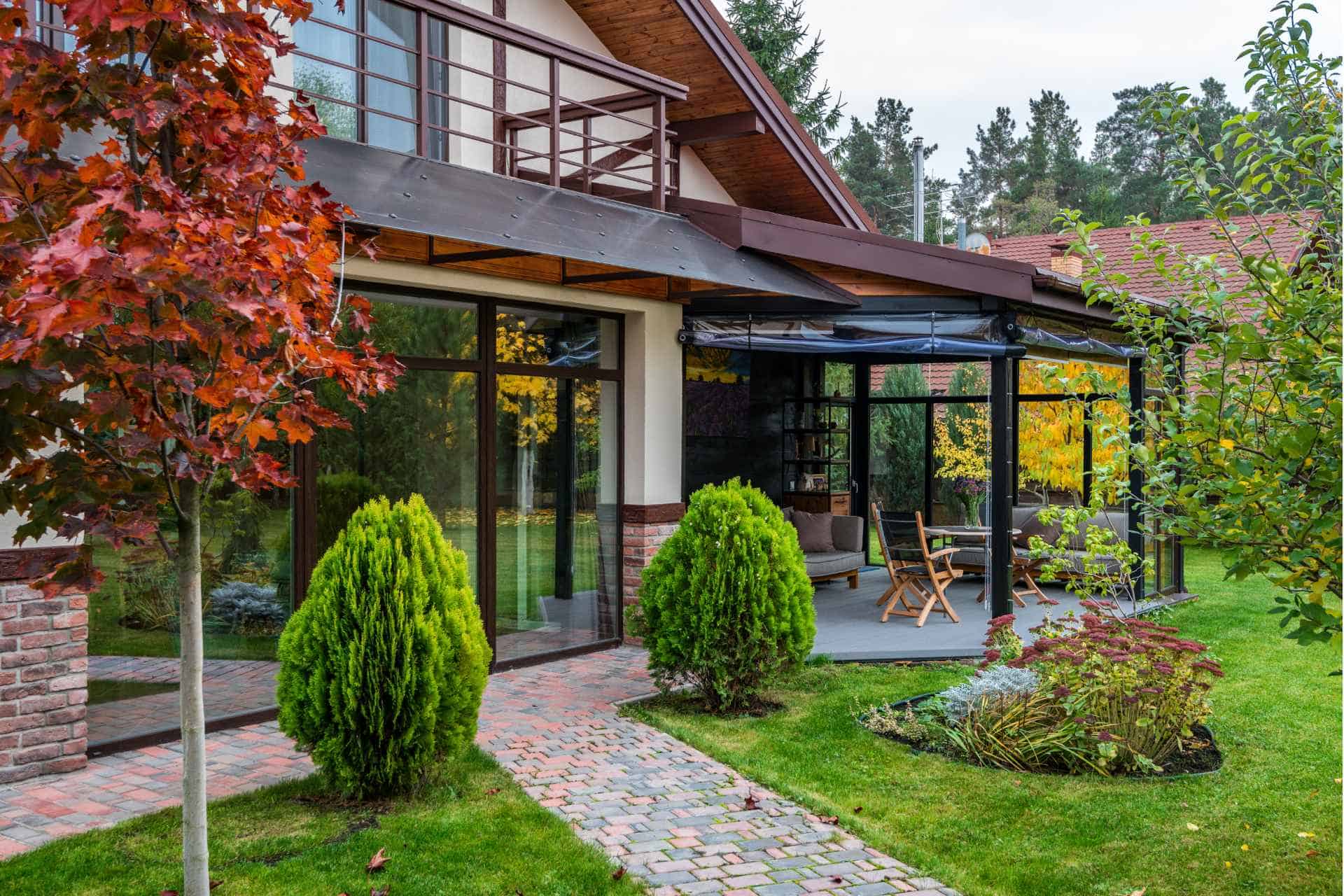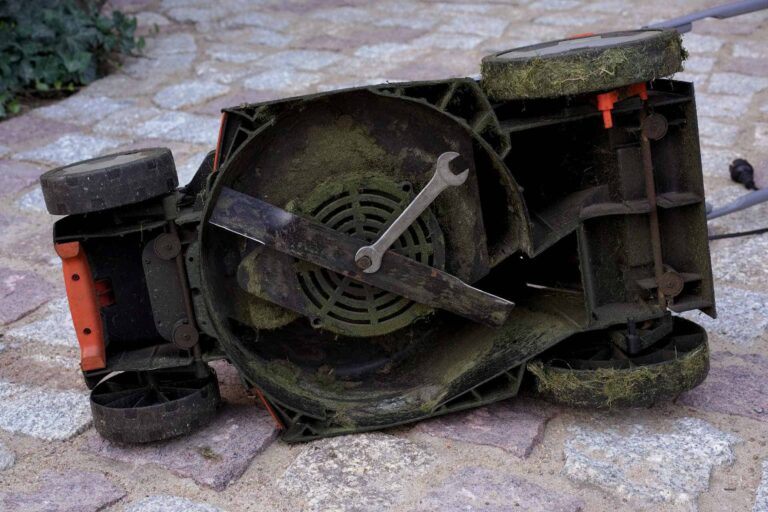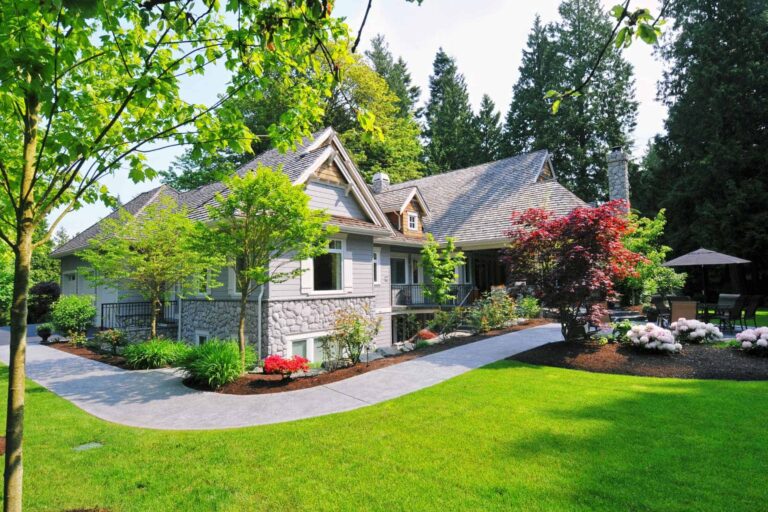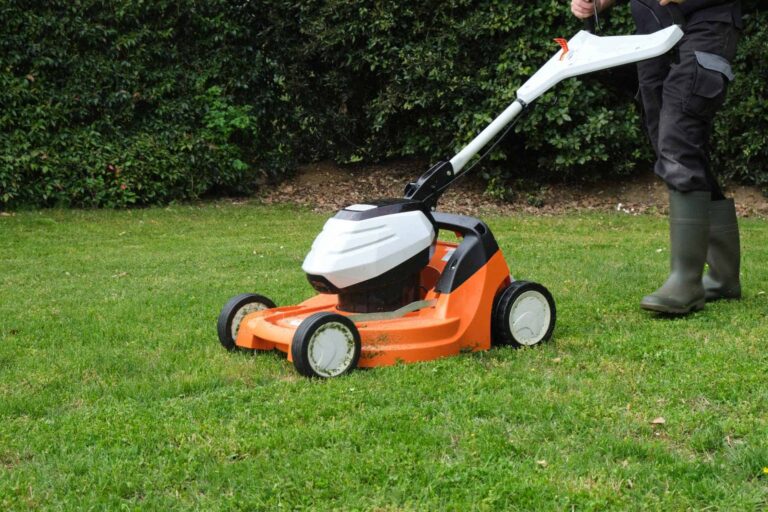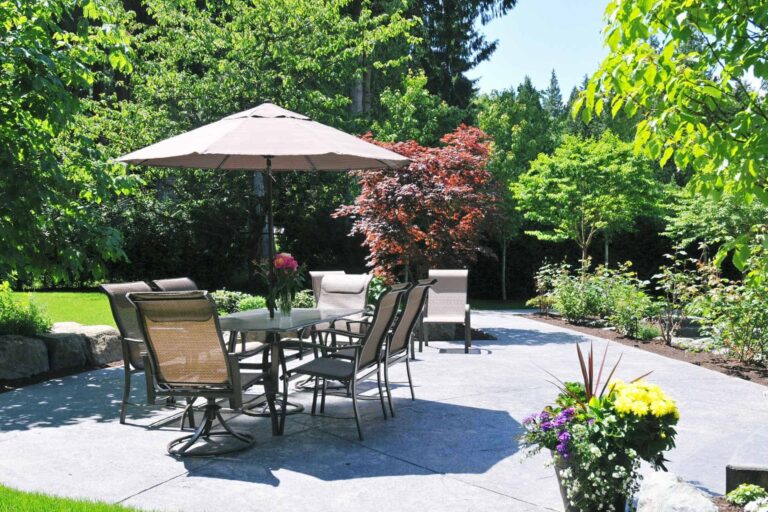Lawn Care and Landscaping: Techniques and Trends for the Modern Backyard
Lawn care and landscaping are integral components of the modern backyard, enhancing both the aesthetics and usability of outdoor spaces. These practices not only create visually pleasing environments but also contribute to better air quality, improved biodiversity, and increased property value. Incorporating modern techniques and sustainable approaches in lawn care and landscaping can transform your backyard into a verdant oasis, reflecting personal style while also promoting environmental stewardship. This guide explores the fundamentals of lawn care and landscaping, highlighting the latest trends and technologies, and demonstrating how a combined approach can maximize the potential of your backyard.
Understanding Lawn Care
Lawn care is more than just mowing your grass regularly. It involves a range of tasks that ensure the health and beauty of your lawn, such as watering, fertilizing, aerating, and controlling weeds. Understanding the basics of lawn care can be the difference between a lush, vibrant lawn, and a dull, lifeless one. In this section, we delve into the fundamental principles and practices of lawn care that will keep your lawns thriving all year round.
Basics of lawn care
The cornerstone of effective lawn care is regular maintenance. This includes consistent mowing, as keeping your grass at a proper height can boost its health and aesthetic appeal. Watering is also crucial, although it’s important to avoid over-watering, which can lead to shallow root growth and increased vulnerability to pests. Fertilizing your lawn provides the nutrients it needs to thrive, and should be done at least a couple of times a year, ideally in the spring and fall. Aerating your lawn ensures that water, nutrients, and oxygen reach the grass roots, and is typically done once a year. Weed control is another key component of lawn care, and involves both preventative measures and active removal of weeds. Understanding and implementing these basic lawn care practices can result in a lush and vibrant lawn that enhances the overall appearance of your property.
Modern techniques and equipment for lawn care

Utilizing modern techniques and equipment can significantly enhance the efficiency and effectiveness of your lawn care routine. Today, there are automated sprinkler systems that take the guesswork out of irrigation, delivering the right amount of water at preset times. Similarly, robotic lawnmowers can take care of mowing without your intervention, following a set schedule and ensuring your lawn is always at the optimal height.
On the fertilization front, slow-release fertilizers have been a game-changer. They provide a steady supply of nutrients over a longer period, promoting healthier growth and reducing the risk of over-fertilization.
When it comes to aeration, devices like spike aerators and plug aerators help in creating small holes in the soil, breaking up compacted soil, and promoting the penetration of water, oxygen, and nutrients.
Lastly, modern weed control methods, such as selective herbicides, can target specific types of weeds without harming your grass. There are also weed pulling tools that make the physical removal of weeds far less strenuous.
Combining these modern techniques and equipment can streamline your lawn care routine, improve your lawn’s health and appearance, and save you significant time and effort.
The role of sustainable practices in lawn care
In the current era of environmental awareness, sustainable practices in lawn care are more relevant than ever. Implementing eco-friendly methods can contribute significantly to conserving natural resources and preserving biodiversity. For instance, using organic fertilizers instead of synthetic ones can reduce soil and water pollution, supporting the health of local ecosystems. Conservation-oriented irrigation techniques, such as drip irrigation or the use of rain barrels, can significantly decrease water use. Also, adopting native plants and grasses that are naturally suited to the local climate and soil conditions can reduce the need for extensive watering and fertilization. Additionally, composting grass clippings and leaves not only reduces waste but also enriches the soil with valuable organic matter. By embracing sustainable practices, homeowners can maintain beautiful lawns while simultaneously reducing their environmental impact and promoting biodiversity.
Lawn Care and Landscaping: A Combined Approach

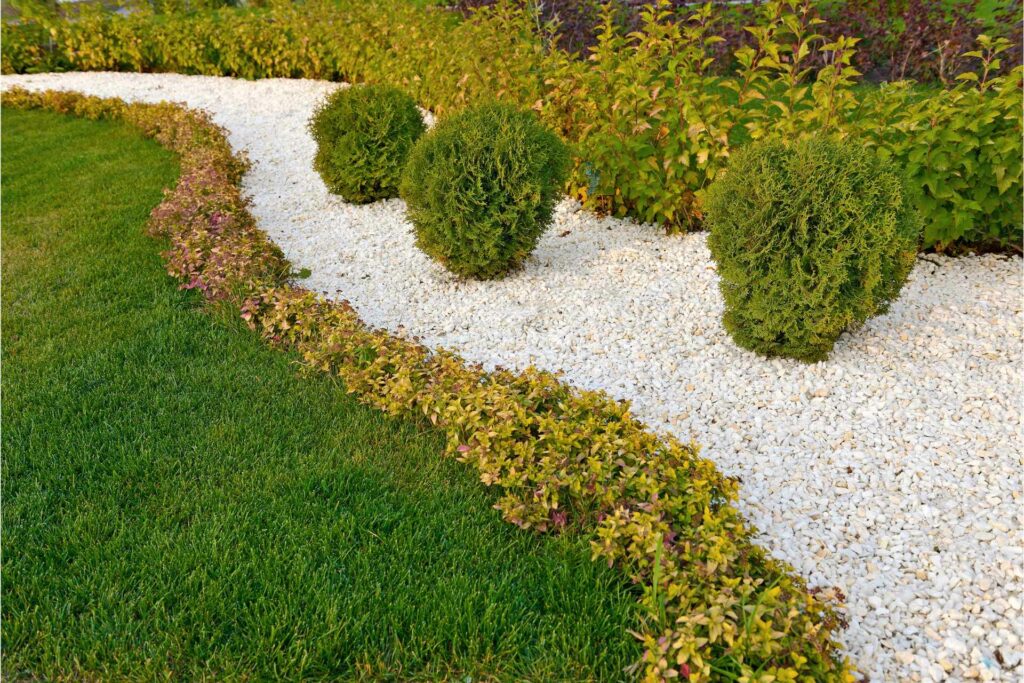
When considering the aesthetics of residential properties, lawns and landscaping are two key elements that interact to create a harmonious and eye-catching outdoor environment. Lawncare focuses on maintaining the health and appearance of the grass, while landscaping goes beyond, including design, installation, and maintenance of all outdoor elements such as plants, trees, hardscapes, and lighting. Adopting a combined approach to lawn care and landscaping can result in a well-integrated and balanced outdoor space. This approach allows homeowners to create outdoor spaces that not only enhance the curb appeal of their properties but also serve as functional, enjoyable extensions of their living spaces.
Importance of integrating lawn care and landscaping
The integration of lawn care and landscaping is crucial as it leads to the creation of cohesive outdoor spaces that are both aesthetically pleasing and functional. A well-maintained lawn serves as a lush, green canvas for the rest of the landscape design. Meanwhile, strategic landscaping enhances the visual appeal of the lawn itself and can even contribute to its overall health. For example, trees can provide necessary shade to grass in hotter climates, reducing water evaporation and protecting the lawn from sun damage.
Furthermore, by considering lawn care and landscaping as interconnected parts of a larger whole, homeowners can more effectively plan their outdoor spaces. For instance, a well-planned landscape can incorporate design elements that make lawn maintenance easier, such as landscaping borders that prevent grass from growing into flower beds. Conversely, a healthy, well-maintained lawn can enhance the effectiveness of landscaping by providing a robust ground cover that prevents soil erosion and supports the health of surrounding plants and trees.
Sustainable Practices in Lawn Care and Landscaping
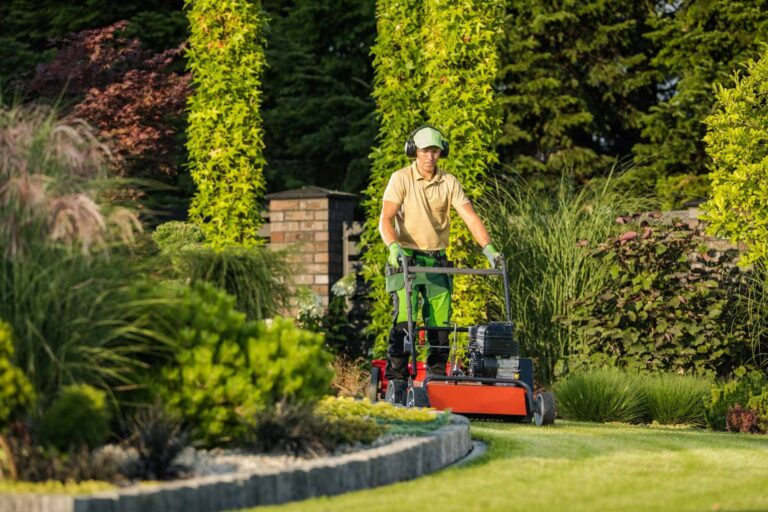
In our current era of increased ecological awareness, sustainable practices in lawn care and landscaping have become more important than ever before. By implementing methods that minimize environmental impact and promote biodiversity, homeowners can create beautiful outdoor spaces that are not only aesthetically pleasing but also contribute positively to the environment. These practices range from water conservation and organic fertilization to the use of native plants and environmentally-friendly landscaping designs. The following sections delve into these sustainable practices, offering insights into how they can be incorporated into a comprehensive approach to lawn care and landscaping.
Organic lawn care and landscaping
Organic lawn care and landscaping revolve around nurturing a healthy ecosystem in your yard, fostering an environment that supports the natural growth and development of plants. The practice shuns the use of synthetic fertilizers and pesticides, instead employing organic materials and methods to sustain lawn and plant health.
One of the key principles of organic lawn care is soil health. Healthy soil, rich in organic matter and beneficial microorganisms, is the foundation of a thriving lawn or garden. Organic fertilizers, such as compost or manure, are used to enhance soil fertility and structure, promoting the growth of strong, resilient plants.
Moreover, organic lawn care methods also encourage biodiversity. Rather than trying to maintain a uniform lawn of a single type of grass, organic methods support a diverse range of plant life. This can create a more resilient ecosystem, able to withstand disease, pests, and weather extremes.
In terms of landscaping, organic practices could include using plants native to the local area, which are adapted to the local climate and soil conditions. These plants require less maintenance and usually resist pests and diseases better than non-native species. By adopting organic lawn care and landscaping practices, homeowners can create healthier, more sustainable outdoor spaces.
Water-saving techniques
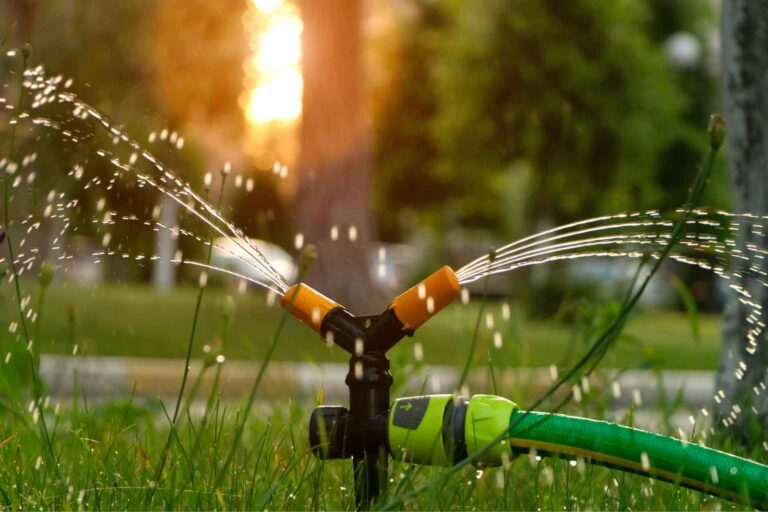
Water-saving techniques are integral to sustainable lawn care and landscaping, helping to lessen the environmental impact and benefiting homeowners by reducing water bills. Utilizing rainwater through the installation of rain barrels or other collection systems is a simple and effective method. This stored water can then be used for irrigation during drier periods, conserving the use of municipal or well water.
Mulching is another water-saving strategy that also enriches the soil. It retains moisture in the ground by slowing the evaporation rate, thereby reducing the amount of watering needed. Furthermore, it helps to suppress weed growth and improve soil health, promoting the growth of more water-efficient plants.
Drip irrigation systems can also be highly effective. Instead of spraying water across large areas, these systems deliver water directly to the base of plants, minimizing evaporation and runoff. This method is especially beneficial in areas with plantings densely spaced or with different water needs.
Lastly, choosing drought-tolerant plants native to your area can significantly decrease water consumption. These plants are adapted to survive with less water, making them an ideal choice for a more sustainable landscape. By incorporating these water-saving techniques into your lawn care and landscaping approach, you can maintain a beautiful, healthy yard that is also water-efficient.
Importance of biodiversity
Biodiversity is of paramount importance in maintaining the health and functionality of ecosystems. An ecosystem with a high level of biodiversity is more robust and resilient against environmental changes such as climate shifts or the introduction of invasive species. Each species plays a unique role – be it a pollinator, a predator, a decomposer, or a provider of shade – contributing to the overall balance and productivity of the ecosystem. Moreover, biodiversity also serves as a source of genetic diversity which can be vital for crop improvement, medicine development, and the overall resilience of life against diseases and changes in the environment. In the context of lawn care and landscaping, encouraging biodiversity could mean planting a variety of plant species, creating habitats for a range of insects, birds, and other animals, and using organic practices that enhance the soil biodiversity. This not only creates a vibrant and dynamic garden but also contributes to local biodiversity conservation efforts. In conclusion, biodiversity is not just aesthetically pleasing but also provides a multitude of ecological, economic, and social benefits, making its conservation an imperative in sustainable lawn care and landscaping practices.
Conclusion
In summary, the current trends and techniques in lawn care and landscaping are increasingly embracing sustainability and biodiversity. Water-efficient practices conserve this valuable resource, while also promoting healthier plant growth. The importance of biodiversity extends beyond aesthetic appeal: it is crucial for the healthy functioning and resilience of ecosystems, and it offers a wealth of benefits, from genetic diversity to soil health. As we continue to understand the profound impact our choices have on the environment, there is a growing commitment to incorporate these principles into the care and design of our backyards. The modern backyard is not just a space for leisure and beauty, but also a platform for environmental stewardship and biodiversity conservation. The future of lawn care and landscaping lies in these sustainable, biodiversity-friendly practices that create vibrant, resilient gardens while contributing positively to our planet’s well-being.
Frequently Asked Questions (FAQ)
What are the most important landscaping techniques for creating a modern backyard?
The key landscaping techniques for creating a modern backyard include integrating indigenous plants for enhancing biodiversity, using water-efficient irrigation systems for sustainability, and applying organic lawn care practices for soil health. Additionally, creating multi-functional spaces for leisure, gardening, and wildlife is paramount. Lastly, incorporating hardscaping elements like patios and walkways made from sustainable materials can add an aesthetically pleasing yet functional dimension to the backyard. These techniques foster a balance of beauty, functionality, and environmental stewardship.
What plants and flowers should I consider for my backyard?
When choosing plants and flowers for your backyard, consider native species like Coneflowers or Black-eyed Susans, which promote biodiversity and are often drought-resistant. For a burst of color, Butterfly Bushes and Daylilies are excellent choices. Edibles like Basil and Cherry Tomatoes are functional and also aesthetically pleasing. Tall grasses like switchgrass can provide beautiful backdrops, and shade-loving plants like Hostas and Ferns are perfect for less sunny spots. Remember, selecting a variety of plants that bloom at different times keeps your backyard vibrant year-round.
What are some of the latest trends in lawn maintenance and care?
The latest trends in lawn care predominantly focus on sustainability and eco-friendliness. Organic lawn care, which shuns synthetic fertilizers and pesticides, is growing in popularity. There’s also a rise in the use of native, drought-resistant plants to reduce water consumption. Another trend is embracing a more “wild” or natural look for lawns, which can support local biodiversity. Finally, solar-powered lawn equipment and smart irrigation systems are gaining traction, reflecting the general trend toward energy efficiency and water conservation.
What types of tools and supplies do I need for lawn care?

For basic lawn care, you would need a lawnmower to keep the grass trimmed and tidy, and a rake for collecting leaves and debris. Other essential tools include a garden hose or sprinkler system for watering, and a set of pruners for trimming shrubs and small branches. A spade or shovel is useful for planting, and a wheelbarrow can assist with moving soil or debris. Lastly, consider protective gloves, a hat for sun protection, and comfortable, sturdy footwear for safety.
What are some of the most common mistakes made by homeowners when it comes to lawn care?
Some common mistakes homeowners make with lawn care include overwatering or underwatering their lawn, leading to either waterlogged soil or dried-out grass. Additionally, infrequent mowing or cutting the grass too short can stress the lawn and lead to poor growth. Many homeowners also neglect to aerate their lawn, which can prevent oxygen, water, and nutrients from reaching the grass roots. Lastly, using the wrong fertiliser or applying it at the wrong time can have detrimental effects on lawn health.

